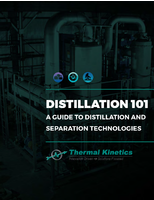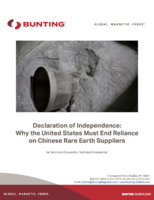Hench Control's Intermittent Cooling System
Share:
When it comes to blast freezing, most refrigerated facilities run their rooms flat-out and non-stop until the product has reached its desired temperature, regardless if it is meat, fish or vegetables. It is also assumed by many that this is the only way to achieve this goal under a given time criteria or constraint. Even though running a blast freezer at maximum does accomplish the job, it wastes a huge amount of energy in the process.
Most compressor manufacturers supply a micro for compressor management to control (not manage energy) the compressor/condenser combination and/or evaporator, both in a vertical ladder logic process. Compressor manufacturers have simple control systems which in some cases are managed and run by a single point of reference (i.e. one temperature sensor per control point) or other.
It is impossible to efficiently and accurately measure and manage energy without multiple points of information. With owners and operators alike looking for ways to reduce their energy usage and bills, the Hench Control Intermittent Cooling System TM provides a welcomed solution and true Energy Management solution.
The Hench Control Intermittent Cooling System TM saves energy by calculating the thermal time constant of mass (product). The process and function shuts off fans for one specific and changing thermal time constant of soak time, followed by one specific and changing thermal time constant of blast time, after the initial heat has been removed (surface heat). Until the calculated cycle has reached the desired thermal point, the process accelerates and decelerates the intervals according to a complex thermodynamic formula. This proprietary Hench Intermittent Cooling System TM approach allows the blast cell to remove the energy at the same rate as if the fans were running continuously, but reduces fan energy and the refrigeration energy needed to remove fan heat. The soak time or thermal time constant has a critical time line that is calculated in minutes and seconds related to mass and calculated to accomplish seamless heat equilibrium in product.
The Hench Blast Freezer Controller takes advantage of the fact that the limiting factor for removing heat in a blast freezer is the conduction of heat in the product, not the heat transfer coefficient on its surface. Using the Hench Intermittent Cooling System TM approach has proven itself over the years in many facilities. A third advantage of the Hench Intermittent Cooling System TM is that it will reduce demand in the middle of the cycle as the calculations perform hundreds of times per minute while the controller moderates the temperature and soak time. For example, a 50-pound tub will have a thermal time constant (soak time) of 30 minutes, but a 3-inch high box of squid will have about a 4 minute thermal time constant (soak time). Finally, the Hench Blast Freezer Controller saves energy and reduces demand because it shuts off the blast cell when it is done (reached maximum saturation point) and will alarm the operator/facility accordingly.
Once the outer surface of the product has reached the desired temperature, there is no need to continuously blow additional cold air over saturated mass. The Hench Blast Freezer Controller takes advantage of the physics, oscillating fans for the critical time period allowing the heat to equilibrate in the product. This process will result in heat removal at the same rate as if the fans were running continuously, when left to the sophisticated code and formulation in the Hench Blast Freezer Controller. In addition, fans are adding heat to the blast freezer which has to be calculated as to the horse power friction (heat) to be removed. Near the end of a typical continuous blast freezer cycle; most of the heat removed is fan heat which is nearly eliminated using the Hench Intermittent Cooling System TM.
To start with, this reduction in energy usage with regard to blast freezing is only possible because the Hench Intermittent Cooling System TM is loaded with millions of lines of code. This code applies a number of its logarithm tables doing calculations on a contiguous basis at a rate of hundreds of calculations per minute. A one time input to the logarithm table of volume (cubic feet) of the cell, will start the cycling process as early as the point when the freezing begins. The Energy Management System calculates, verifies and does all the work based strictly on thermodynamics and not human input or apprehensions.
The Hench Intermittent Cooling System TM is cycling horse power on one end and is allowing physics to do its job on the other end. The Hench Intermittent Cooling System TM takes millions of lines of code to get it to balance the necessary time needed to turn the goods in blast cells. That is Hench Control's forte, not only in blast cells but in the whole of the refrigeration portion of a facility.
The simplest way to describe intermittent cooling in physical terms is that once the outside of the product is cold, you are now blowing cold air over a cold surface which does not remove much heat. After an appropriate soak time, the surface has warmed up slightly and its ability to transfer heat is greatly improved. Cycling and soak process is counterintuitive to most people.
This process was discovered and became a bundled proprietary equation for Hench Control when its founder, a PhD in thermodynamics, assembled a hand-picked group of PhD's analyzing heat transfer in Nuclear Reactors. In 1985 Hench Control was awarded a grant for a study requested by Pacific Gas and Electric, a California Utilities Company, for the expressed benefit of discovering the effects of this proprietary function. The test resulted in an astonishing 28% reduction in the use of energy in Blast Freezing using the Hench Intermittent Cooling System TM. The energy savings has since improved with the advent of additional findings throughout the last 20 years.




